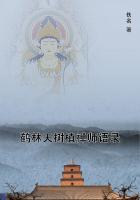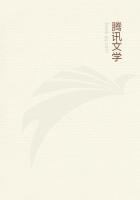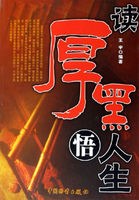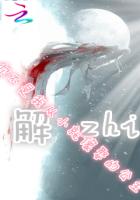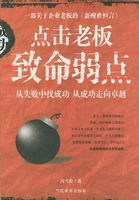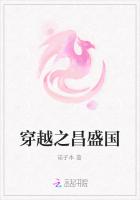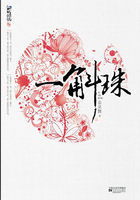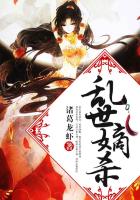For, one the one hand, wine is said to be one and water is said to be one, qua indivisible in kind; and, on the other hand, all juices, e.g. oil and wine, are said to be one, and so are all things that can be melted, because the ultimate substratum of all is the same; for all of these are water or air.
(ii) Those things also are called one whose genus is one though distinguished by opposite differentiae-these too are all called one because the genus which underlies the differentiae is one (e.g. horse, man, and dog form a unity, because all are animals), and indeed in a way similar to that in which the matter is one. These are sometimes called one in this way, but sometimes it is the higher genus that is said to be the same (if they are infimae species of their genus)-the genus above the proximate genera; e.g. the isosceles and the equilateral are one and the same figure because both are triangles;but they are not the same triangles.
(c) Two things are called one, when the definition which states the essence of one is indivisible from another definition which shows us the other (though in itself every definition is divisible).
Thus even that which has increased or is diminishing is one, because its definition is one, as, in the case of plane figures, is the definition of their form. In general those things the thought of whose essence is indivisible, and cannot separate them either in time or in place or in definition, are most of all one, and of these especially those which are substances. For in general those things that do not admit of division are called one in so far as they do not admit of it; e.g. if two things are indistinguishable qua man, they are one kind of man; if qua animal, one kind of animal; if qua magnitude, one kind of magnitude.-Now most things are called one because they either do or have or suffer or are related to something else that is one, but the things that are primarily called one are those whose substance is one,-and one either in continuity or in form or in definition; for we count as more than one either things that are not continuous, or those whose form is not one, or those whose definition is not one.
While in a sense we call anything one if it is a quantity and continuous, in a sense we do not unless it is a whole, i.e. unless it has unity of form; e.g. if we saw the parts of a shoe put together anyhow we should not call them one all the same (unless because of their continuity); we do this only if they are put together so as to be a shoe and to have already a certain single form. This is why the circle is of all lines most truly one, because it is whole and complete.
(3) The essence of what is one is to be some kind of beginning of number; for the first measure is the beginning, since that by which we first know each class is the first measure of the class; the one, then, is the beginning of the knowable regarding each class. But the one is not the same in all classes. For here it is a quarter-tone, and there it is the vowel or the consonant; and there is another unit of weight and another of movement. But everywhere the one is indivisible either in quantity or in kind. Now that which is indivisible in quantity is called a unit if it is not divisible in any dimension and is without position, a point if it is not divisible in any dimension and has position, a line if it is divisible in one dimension, a plane if in two, a body if divisible in quantity in all--i.e. in three--dimensions. And, reversing the order, that which is divisible in two dimensions is a plane, that which is divisible in one a line, that which is in no way divisible in quantity is a point or a unit,-that which has not position a unit, that which has position a point.
Again, some things are one in number, others in species, others in genus, others by analogy; in number those whose matter is one, in species those whose definition is one, in genus those to which the same figure of predication applies, by analogy those which are related as a third thing is to a fourth. The latter kinds of unity are always found when the former are; e.g. things that are one in number are also one in species, while things that are one in species are not all one in number; but things that are one in species are all one in genus, while things that are so in genus are not all one in species but are all one by analogy; while things that are one by analogy are not all one in genus.
Evidently 'many' will have meanings opposite to those of 'one';some things are many because they are not continuous, others because their matter-either the proximate matter or the ultimate-is divisible in kind, others because the definitions which state their essence are more than one.
7
Things are said to 'be' (1) in an accidental sense, (2) by their own nature.
(1) In an accidental sense, e.g. we say 'the righteous doer is musical', and 'the man is musical', and 'the musician is a man', just as we say 'the musician builds', because the builder happens to be musical or the musician to be a builder; for here 'one thing is another' means 'one is an accident of another'. So in the cases we have mentioned; for when we say 'the man is musical' and 'the musician is a man', or 'he who is pale is musical' or 'the musician is pale', the last two mean that both attributes are accidents of the same thing; the first that the attribute is an accident of that which is, while 'the musical is a man' means that 'musical' is an accident of a man. (In this sense, too, the not-pale is said to be, because that of which it is an accident is.) Thus when one thing is said in an accidental sense to be another, this is either because both belong to the same thing, and this is, or because that to which the attribute belongs is, or because the subject which has as an attribute that of which it is itself predicated, itself is.

